18 Days in Nepal: Trekking Everest Base Camp, Gokyo Ri, the Three Passes & Kathmandu
Embarking on a trekking journey in Nepal, presents a transformative experience that encapsulates both physical and mental challenges. Follow my Travel Story!
TRAVEL STORIESNEPAL


Some trips are simply holidays. Others change the way you see the world—and yourself.
This 18-day journey through Nepal was one of the latter.
It wasn’t just a trek; it was a test. From the chaotic streets of Kathmandu to the thin, icy air of the high Himalayas, every step brought new beauty and new challenges. I set out to walk one of the most demanding—and rewarding—routes in the world: from Lukla to Everest Base Camp via the legendary Three Passes and Gokyo Ri, through rugged mountain terrain, sleeping in remote tea houses, and battling the biting cold and the effects of high altitude.
What I didn’t expect was how deeply the experience would challenge my mind as much as my body. The trail offered dazzling views of Everest and her towering neighbours, yes—but also fog-delayed flights, days without showers, cold rooms where your breath frosted the air, and moments when all you could do was take the next step despite every instinct to rest.
And yet, within that raw, stripped-down simplicity, I found some of the most extraordinary moments of my life—sunrises over snow giants, turquoise glacial lakes, the warmth of strangers sharing tea in a wind-battered lodge.
This is the full account of my journey—18 days of endurance, wonder, and the humbling, life-changing beauty of Nepal’s high Himalayas
Preparing for the Trek
Trekking in Nepal offers an adventurous escape into the majestic Himalayas, particularly for journeys like Everest Base Camp and Gokyo Ri. Proper preparation is key to ensuring a safe and enjoyable experience. A foundational step involves physical conditioning. Engaging in cardio exercises such as running, cycling, or hiking in advance of your trek will enhance your stamina and fortitude. Focus on developing leg strength and endurance, as these elements are crucial for navigating the often rugged terrain found along the trails.
In addition to physical readiness, gear selection plays an essential role in your trek's success. Invest in high-quality trekking boots that provide not only adequate support but also comfort for extended wear. Layering clothing is recommended, allowing you the flexibility to adapt to changing weather conditions. Waterproof jackets, thermal underwear, and sturdy trekking poles should be part of your essential equipment. Furthermore, remember to pack a first-aid kit that includes altitude sickness medication, as it can be beneficial given the elevation changes.
Obtaining the necessary permits is another integral part of your preparations. Ensure you have the appropriate trekking permits and TIMS (Trekkers' Information Management System) card, which are required for most trekking routes in Nepal. This not only allows access to various regions but also plays a role in ensuring your safety through established tracking systems.
Choosing the optimal time for your trekking adventure is vital. The best seasons for trekking in Nepal are spring (March to May) and autumn (September to November), characterized by stable weather and clear views. Lastly, acclimatization procedures must be considered to combat altitude sickness; ascend gradually and take rest days to allow your body to adjust. Efficient packing and thorough preparation will ensure you're well-equipped for your memorable trekking experience in Nepal.
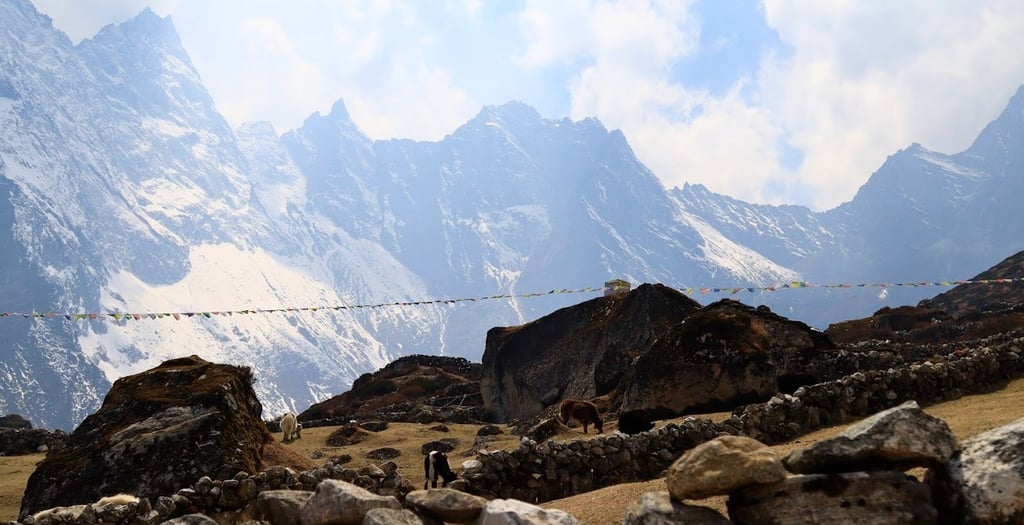

18 Days in Nepal: High Passes, Glacial Lakes, Everest Base Camp & Kathmandu
Day 1-2: Kathmandu – Sensory Overload
Nepal’s capital welcomed me with a glorious assault on the senses—flower garlands, tuk-tuk horns, centuries-old temples, and every spice on the breeze. I met my trekking crew over steaming plates of momo and awaited the legendary adventure to come, mentally ticking off my gear list and charging every camera battery I owned.
Day 3: Lukla Flight Drama, Helicopter Thrills, and the Trail Begins
A classic Himalayan curveball: my early-morning flight to Lukla was canceled due to thick fog—a common, nerve-fraying reality in these unpredictable mountains. I spent 10 anxious hours at the airport, hoping the skies would clear while the window for my trek shrank with each passing hour. The departure board never changed. Determined not to lose a day, I made a tough call and splurged on a last-minute helicopter seat alongside a few equally desperate trekkers. The cost stung, but the payoff was wild—soaring up dramatic valleys past farmhouse rooftops and terraced fields clinging to sheer hillsides.
Suddenly, the tiny ribbon of Lukla’s runway appeared. Hearts pounding, we landed and stepped straight into the rarified air of the Himalayas. Finally, we strapped on our packs for the real start: trekking to Phakding with the Dudh Koshi River roaring far below and hand-painted prayer wheels waiting at every bend.
Days 4-5: Acclimatizing in Namche Bazaar
Ascending through pine forest and crossing iconic suspension bridges festooned with prayer flags, we hiked to Namche. The mountain amphitheater welcomed us with bakeries, bazaars, and our first, heart-stopping glimpse of Everest blinking between clouds.
We wisely stayed an extra day to acclimate—vital at this altitude. A short hike took us to the Everest View Hotel, where hot tea and jaw-dropping panoramas were the reward. Namche was the last real taste of comfort for a long time—and as it turned out, the last place I had a proper hot shower until Gokyo more than a week later.
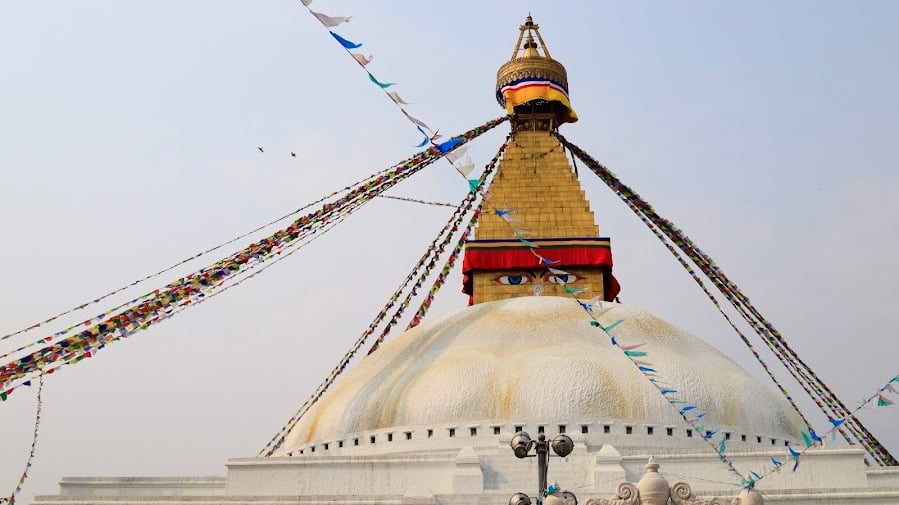

Days 6-8: Tengboche, Dingboche, and Himalayan Blessings
The trail’s rhythm settled in: rocky climbs toward Tengboche’s monastery, where monks offered a blessing ceremony surrounded by incense and the sound of prayer wheels. Higher up, altitude tested our lungs.
Tea house life also became simpler, and colder. At these heights there’s no central heating. The only warm place in most lodges was the communal kitchen-dining room, heated by a single stove. At night, the temperature would plummet well below freezing—even inside. I slept with multiple layers, my thickest sleeping bag, extra blankets, and even my down jacket zipped up tight. My water bottle was often frozen solid by morning.
Showers? Forget it. Facilities were limited, and water supply even more so. From Namche all the way until Gokyo, washing was a matter of cold splashes, wet wipes, and the expectation that you would just “embrace the grime.”
Day 9: The Kongma La – First of the Three Passes
We set off before sunrise for Kongma La (5,535m)—the highest and arguably most punishing of the three passes. The climb was relentless, the winds icy enough to bite through gloves, and breathing was a slow, conscious act. At the top, I forgot my numb toes and admired the sheer magnitude of the panorama—Makalu to the east, Lhotse looming high, and Everest distant but majestic.
Day 10-11: Battling Altitude & Reaching Everest Base Camp
Day 10 was my wall. The altitude hit me hard—splitting headaches, waves of nausea, and overwhelming fatigue as we made the approach to Gorak Shep. My legs felt fine, but my mind was in a constant tug-of-war between determination and the desire to stop.
I drank copious amounts of ginger tea I’d packed from home (a lifesaver), took my altitude medication carefully, and slowed my pace. The cold was sharp here, and Gorak Shep’s tea houses offered no luxuries—thin walls, no heat in the rooms, and only the warmth of human company to make the evenings bearable.
Reaching Everest Base Camp that afternoon was surreal. The glacier groaned nearby, prayer flags whipped in the wind, and I felt both utterly exhausted and completely alive. This was one of the most mentally and physically difficult days of my life, but also one of the most rewarding. It was strange to see all these people quequeing to take that picture in the rock and I can say it was daughting.
The next morning’s climb to Kala Patthar rewarded me with something beyond words: Everest glowing gold as the first light touched her summit, the whole world bathed in silence. Even though tired and a bit hurngy the stunning view of morning glory and mt Everest filled me extreme energy and excitement.
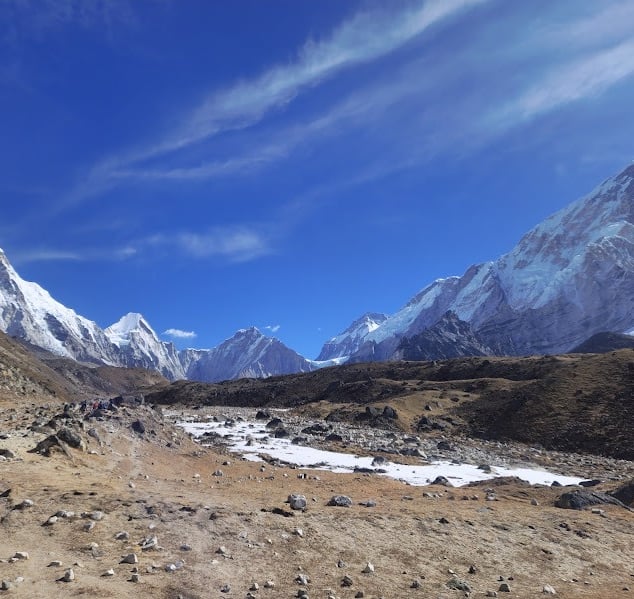

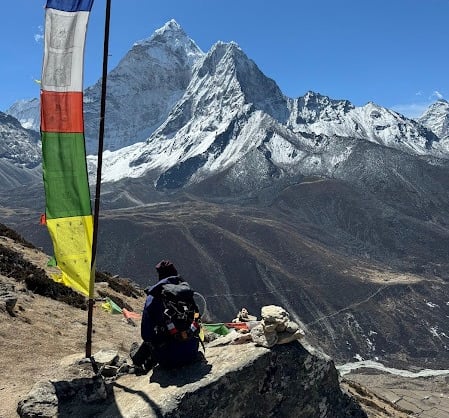

Day 12-14: Cho La Pass & The Turquoise Lakes of Gokyo
Another cold, early start took us over the icy challenge of Cho La Pass (5,368m). By now, wearing every layer I owned was second nature. Once over the pass, the serene Gokyo Lakes appeared, impossibly turquoise even in the thin, crisp air.
This was also where I had my first hot shower since Namche—a blissful, almost comical moment of gratitude. A rest day in Gokyo let me climb Gokyo Ri, one of the most beautiful vantage points in Nepal, overlooking Everest, Lhotse, Makalu, Cho Oyu, and the six glacier-fed lakes below.
Day 15: Renjo La – Grand Finale of the Three Passes
Renjo La (5,360m) was the trek’s crescendo—a stiff, switchbacked climb into a wind that tested balance and patience. The view on the other side was jaw-dropping, Everest and her companions framed perfectly under a vast blue sky. The descent led us back into quieter valleys, where the air felt thicker and villages more welcoming.
Days 16-17: Down Through Thame & Back to Lukla
Following ancient trade paths through Thame, we passed mani walls and centuries-old stupas, retracing the footsteps of traders and monks. Soon, the hum of Lukla signaled the end of the trail. It was bittersweet—part of me longed for a warm bed, but another part wasn’t ready to leave.
Day 18: Kathmandu – Celebration and Reflection
The morning flight to Kathmandu felt strange—watching in 45 minutes the landscapes we’d spent more than two weeks crossing. I remember - while on plane - all the blogs and articles I read about this dangerous flight route; however, it stragly felt the safest thing I ever done as a traveler. We spend our last night celebrating the Nepali New Year! The roads were full with people enjoying their night. Dances, music and crowds filled the centre of the capital offering a nice suprise for our last day!
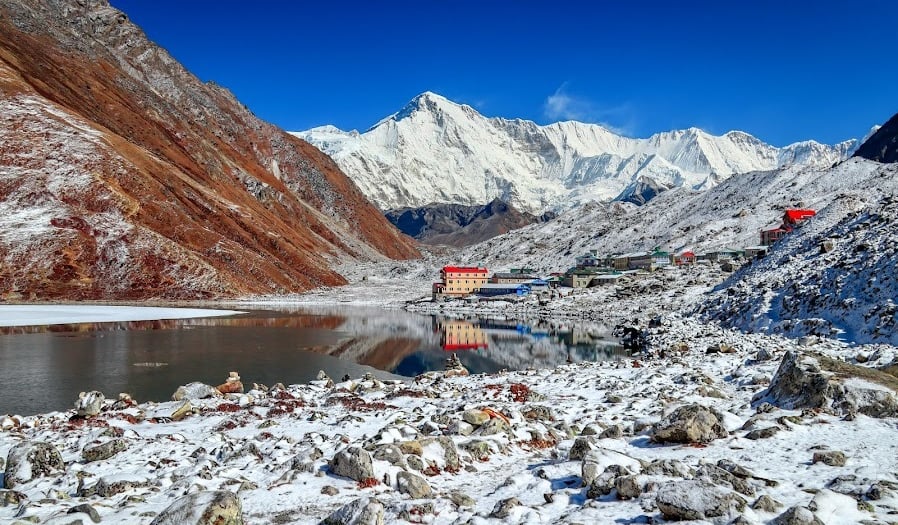

....it was great I remembered to have a second memory card for my camera on this trip! Each part of the hike was a stunning landscape that could not stop capturing with my lens!
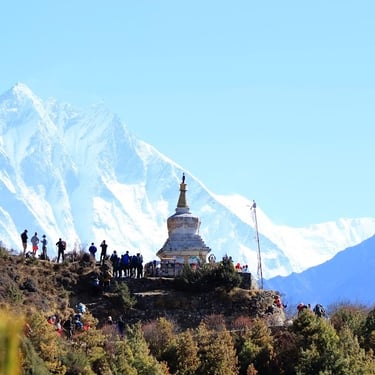
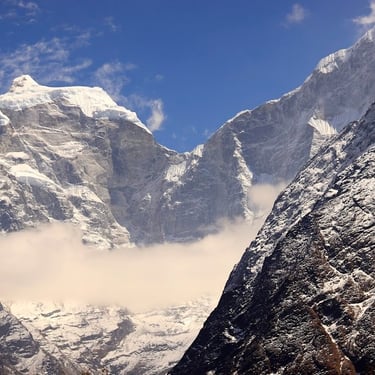
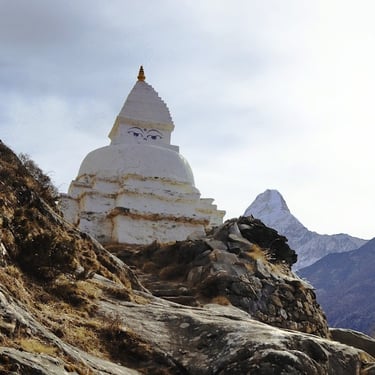
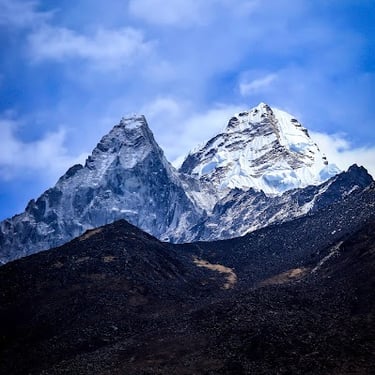
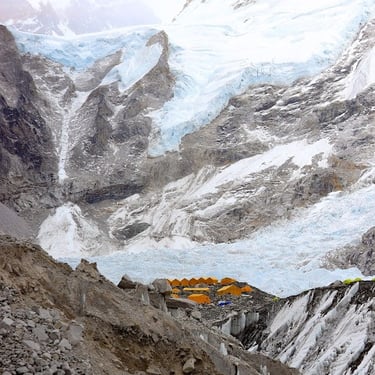
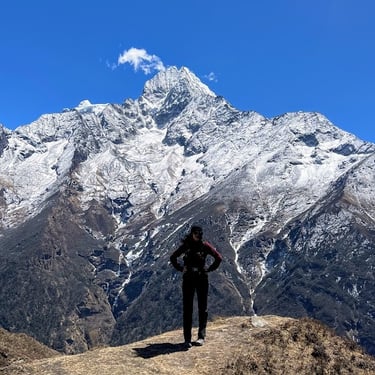
Follow for more Travel Stories! You can also find tips for the best gear for your travels!
